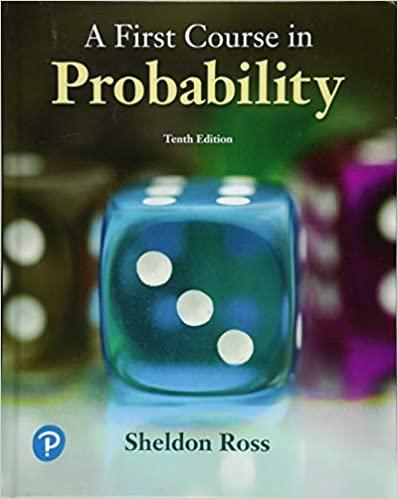Answered step by step
Verified Expert Solution
Question
1 Approved Answer
A large school district claims that 80% of the children are from low-income families. 200 children from the district are chosen to participate in

A large school district claims that 80% of the children are from low-income families. 200 children from the district are chosen to participate in a community project. Of the 200 only 74% are from low-income families. The children were supposed to be randomly selected. Do you think they really were? a. The null hypothesis is that the children were randomly chosen. This translates into drawing 200 times Computer's answer now shown above. You are correct. Your receipt no. is 163-8872 Previous Tries at random Incorrect with replacement Correct: without replacement Computer's answer now shown above. You are correct. Your receipt no. is 163-5911 + from a null box that contains b. Incorrect 200 tickets, 74% marked "1" and 26% marked "0" Previous Tries Correct: Thousands of tickets, 80% marked "1" and 20% marked "0" Incorrect Thousands of tickets marked either "1" or "0", but the exact percentages of each are unknown and estimated from our sample. Incorrect 5 tickets, 1 marked "1" and 4 marked "0" Computer's answer now shown above. You are correct. Previous Tries Your receipt no. is 163-1250 c. What is the expected value of the percent of 1's in the draws? (Don't type in the % sign) 80 % Computer's answer now shown above. You are correct. Previous Tries Your receipt no. is 163-8554 d. What is the SD of the null box? (Note: We don't have to estimate the SD of the box from the sample SD because we can compute it directly from the percent of 1's in the null box. This is why we never use a t-test for problems that can be translated into 0-1 boxes.) Submit Answer Tries 0/3 e. What is the standard error of the % of 1's in the draws? (Round to 2 decimal places.) Submit A Tries 0/3 f. What is the value of the test statistic z? (Round answer to 2 decimal places.) Submit Answer Tries 0/3 g. What is the p-value? Click here to view the normal table % Submit Answer Tries 0/3 h. What do you conclude? There is very strong evidence to reject the null, and conclude that the children were not randomly chosen. We cannot reject the null, it's plausible the children were randomly chosen. %
Step by Step Solution
There are 3 Steps involved in it
Step: 1

Get Instant Access to Expert-Tailored Solutions
See step-by-step solutions with expert insights and AI powered tools for academic success
Step: 2

Step: 3

Ace Your Homework with AI
Get the answers you need in no time with our AI-driven, step-by-step assistance
Get Started


